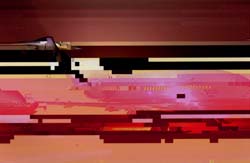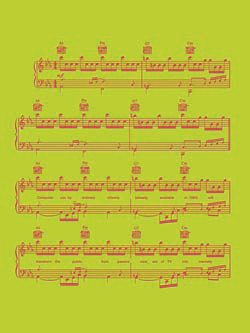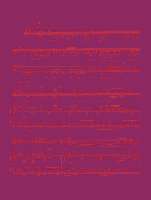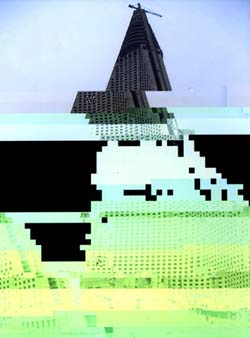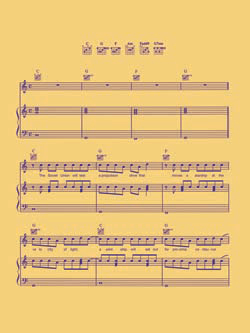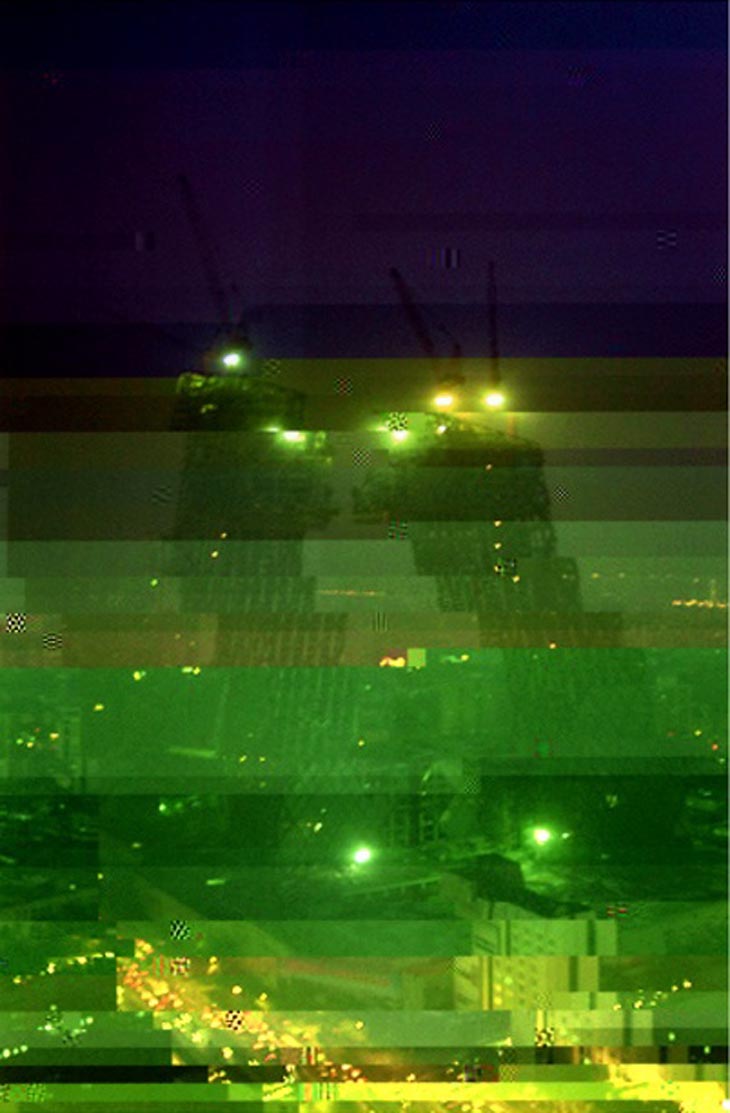
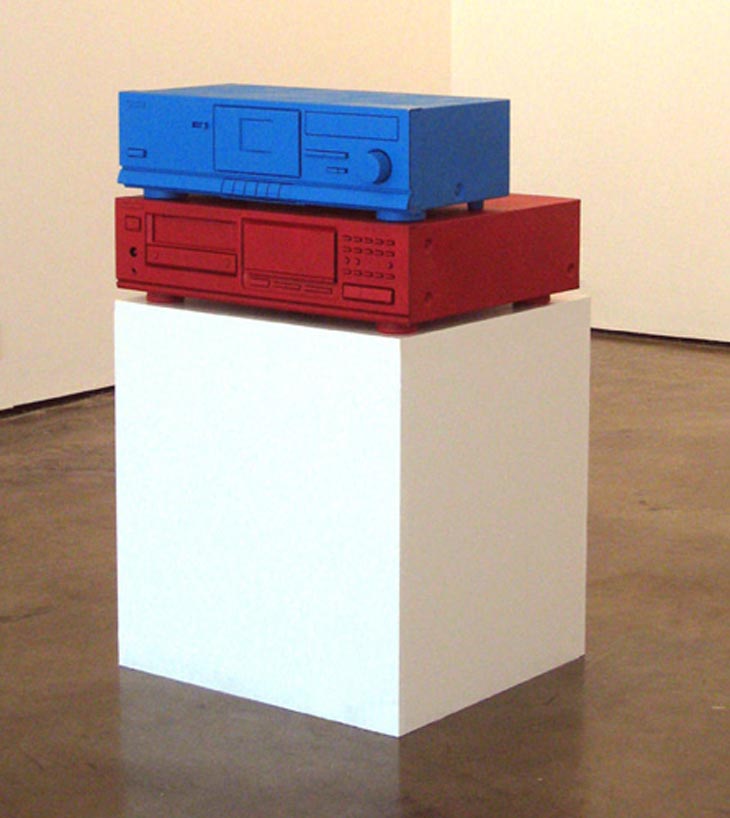
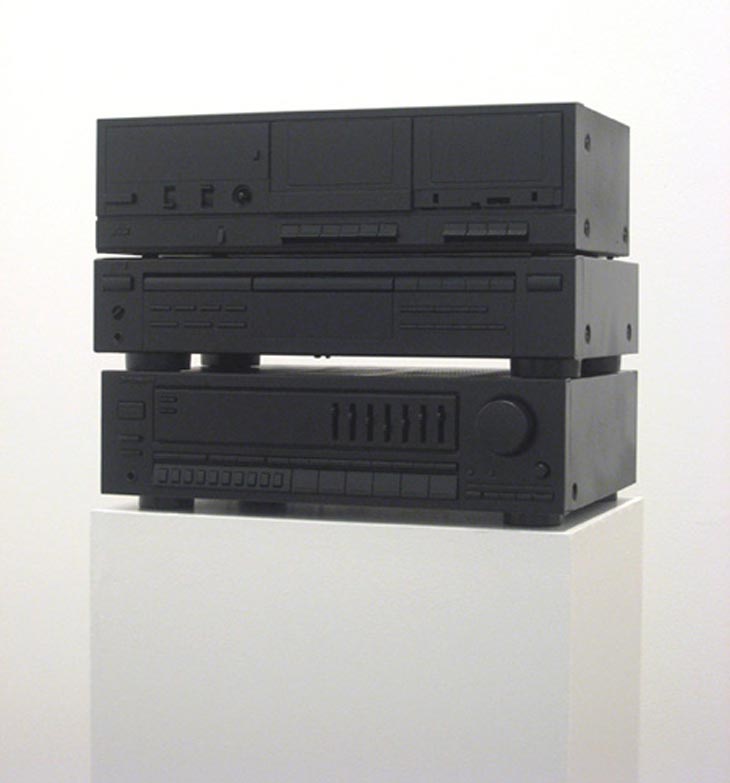
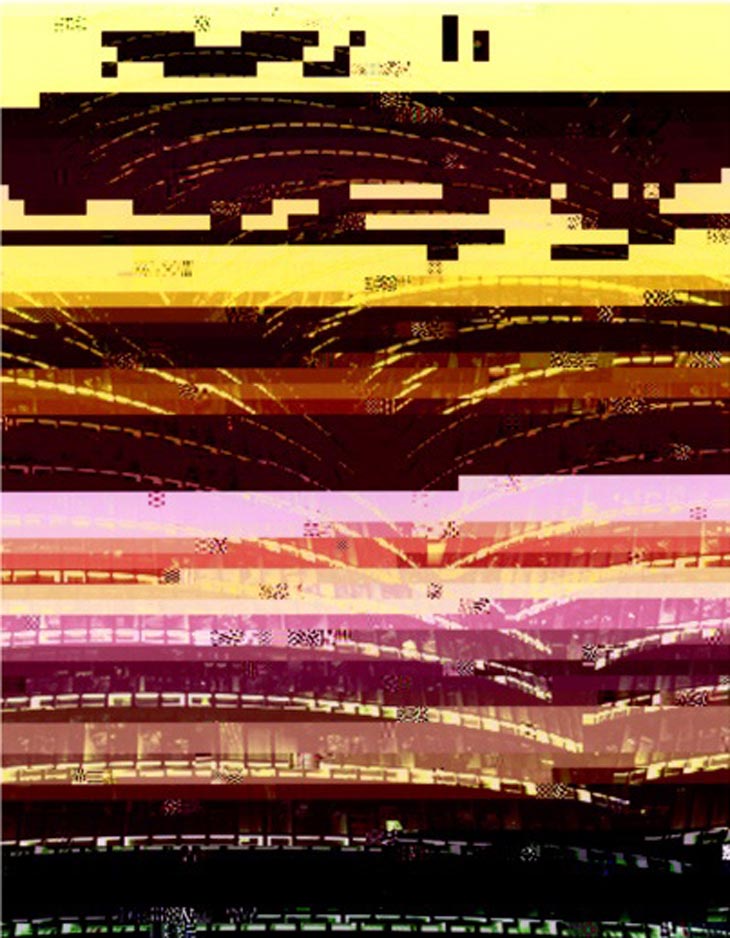

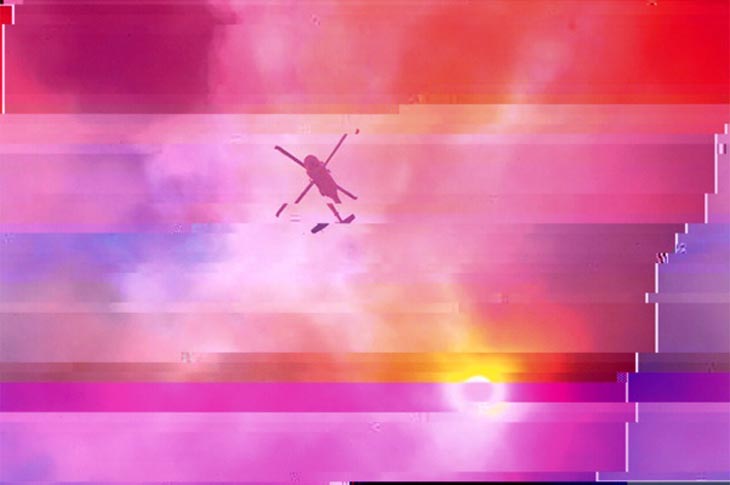
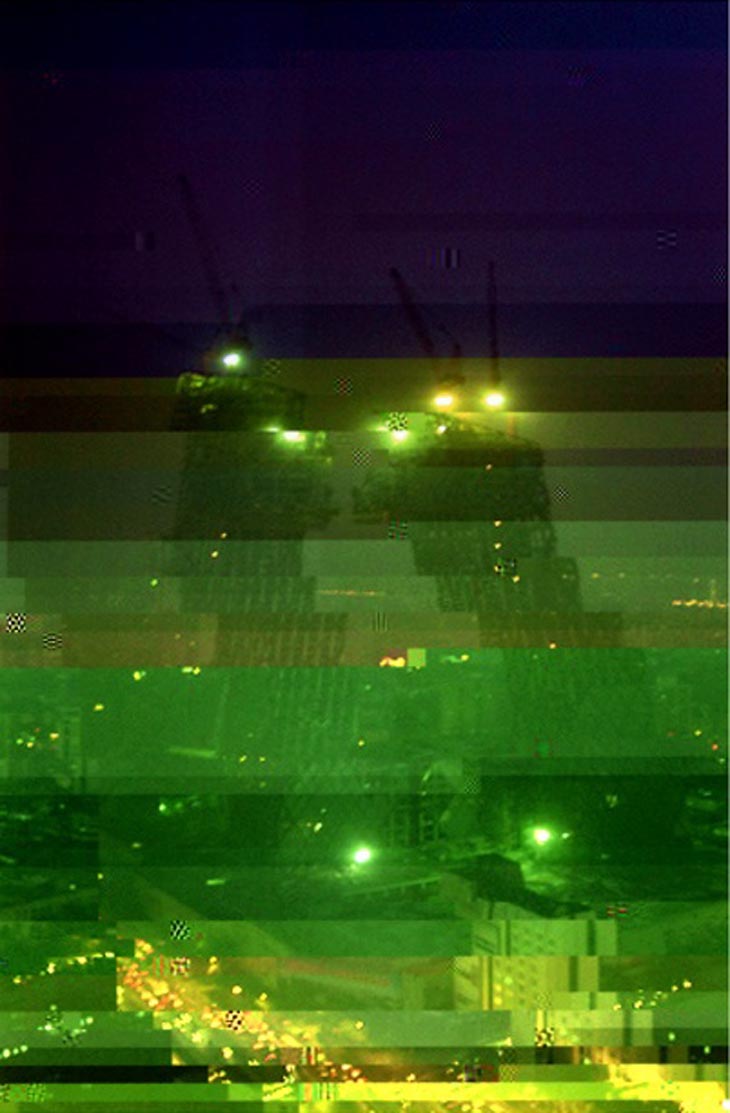
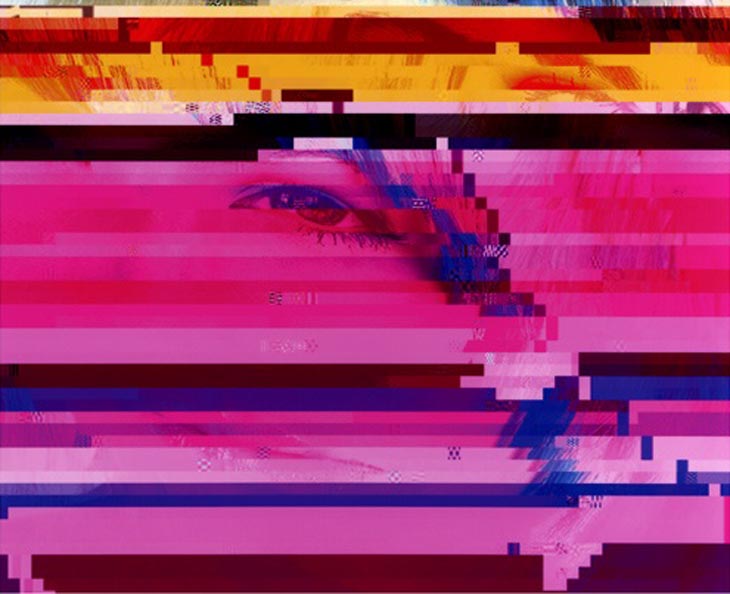
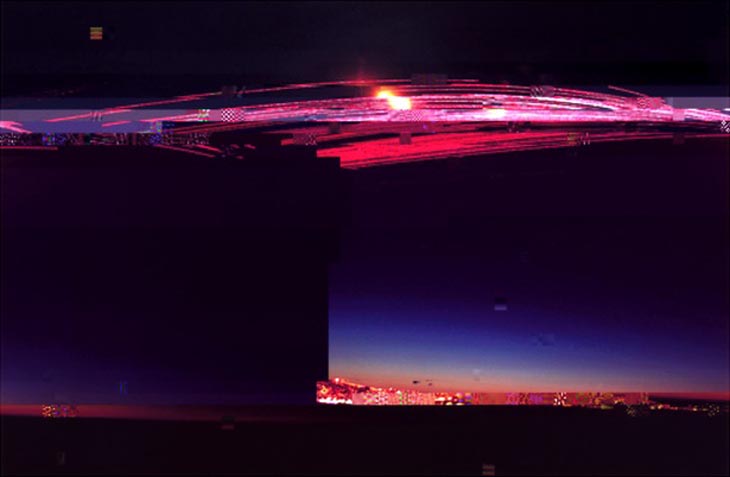

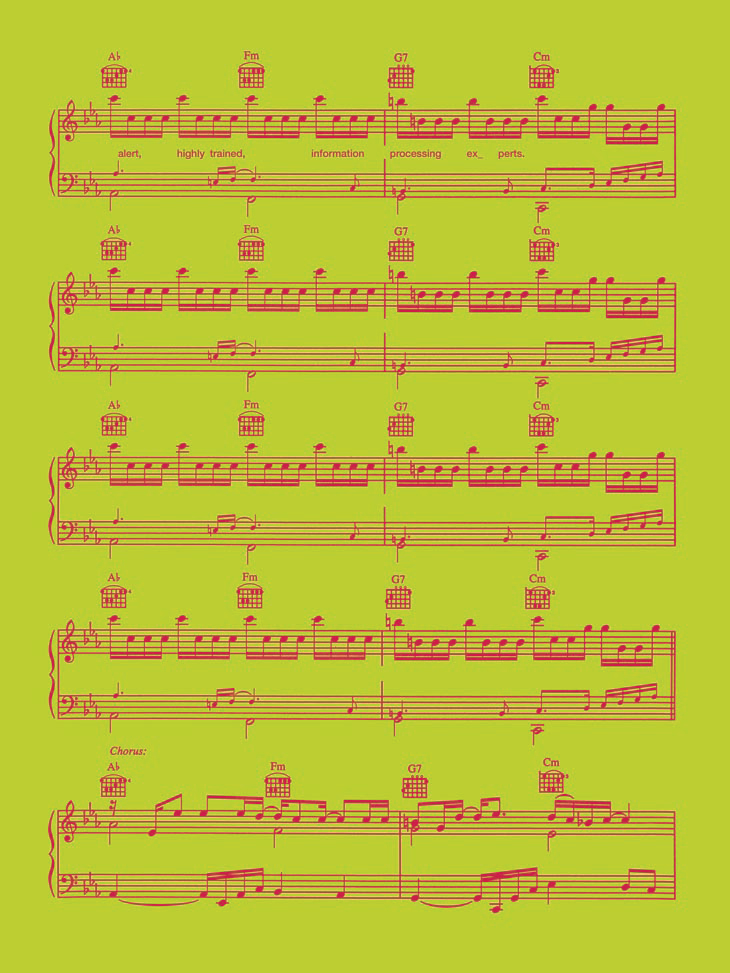
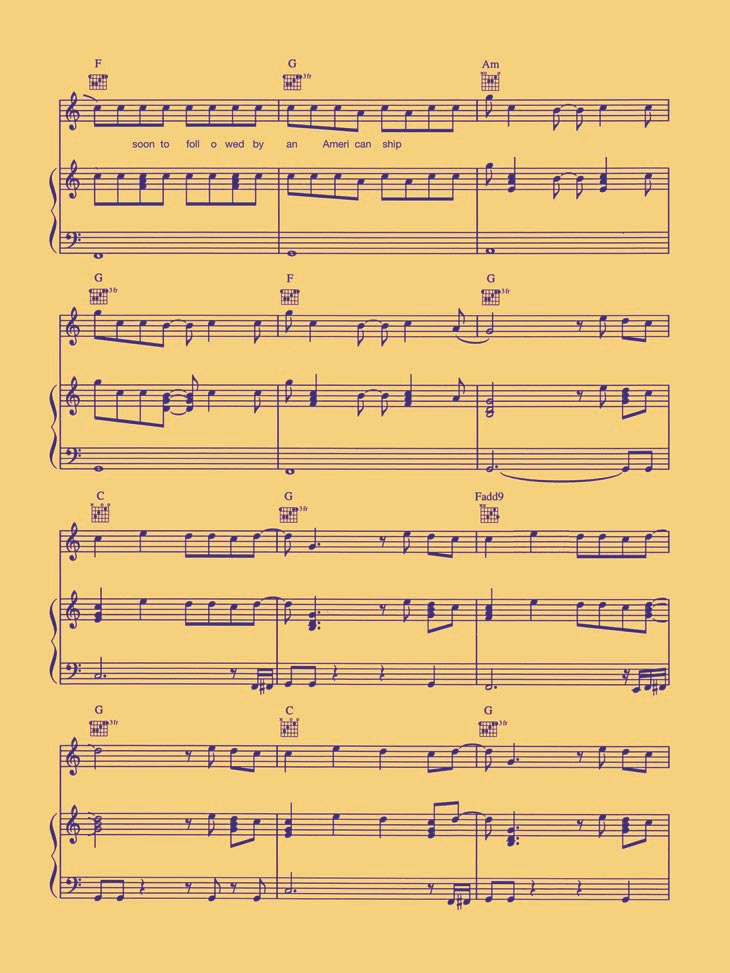
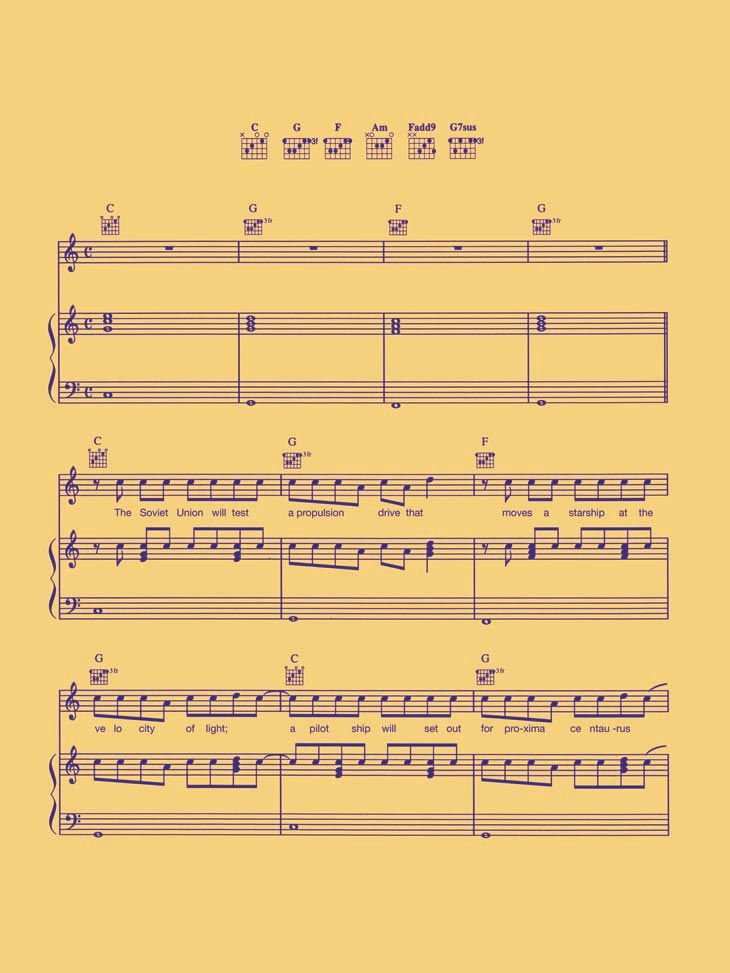
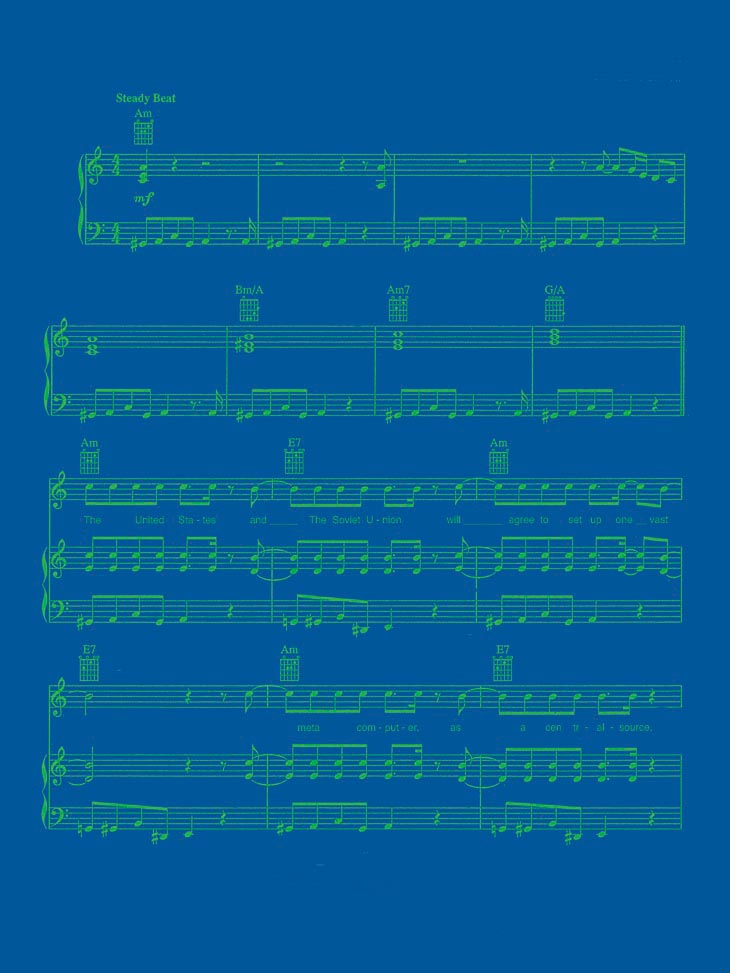
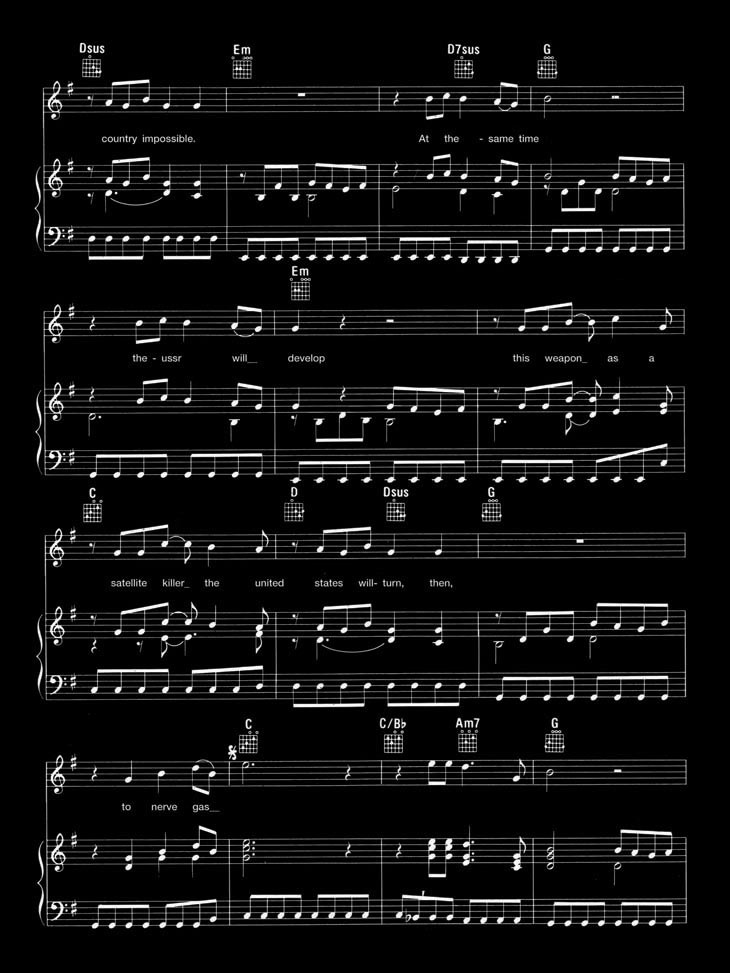
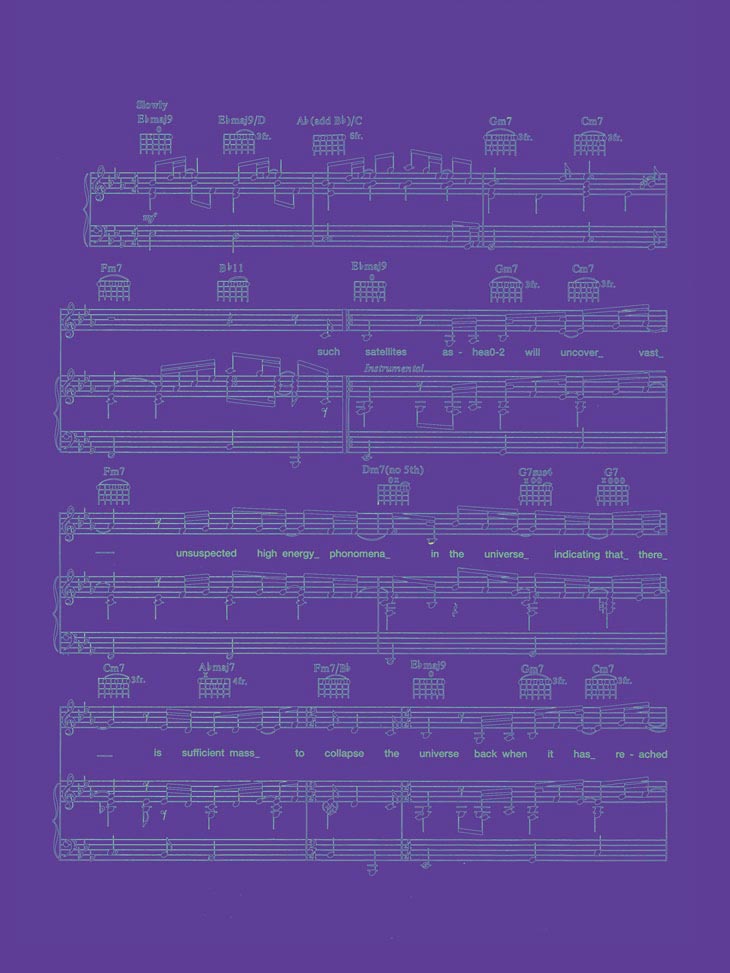
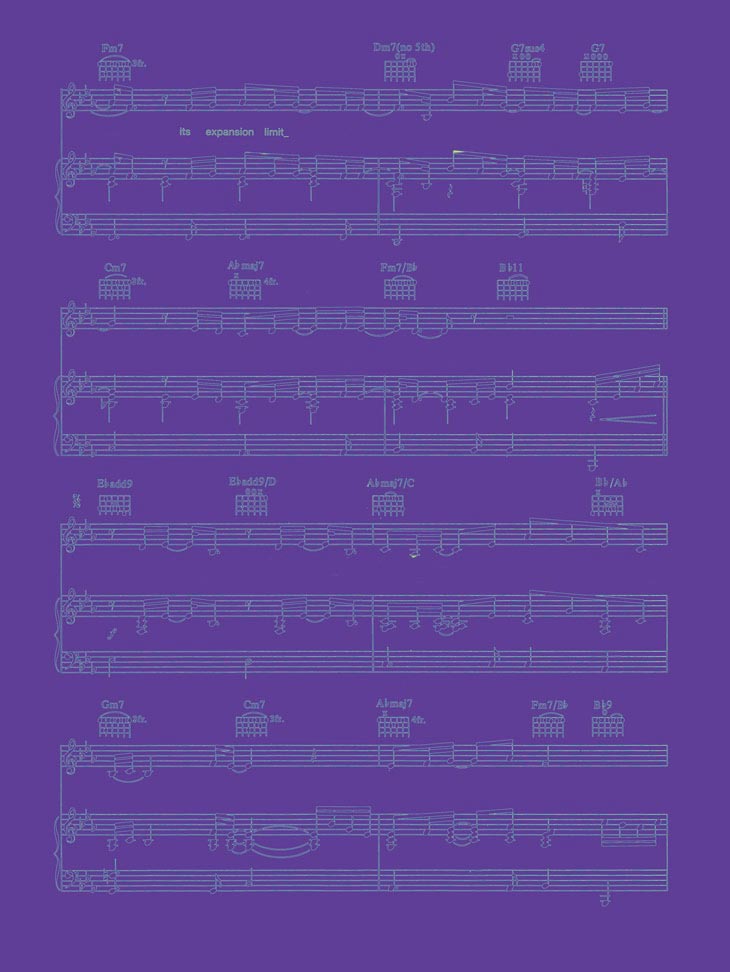

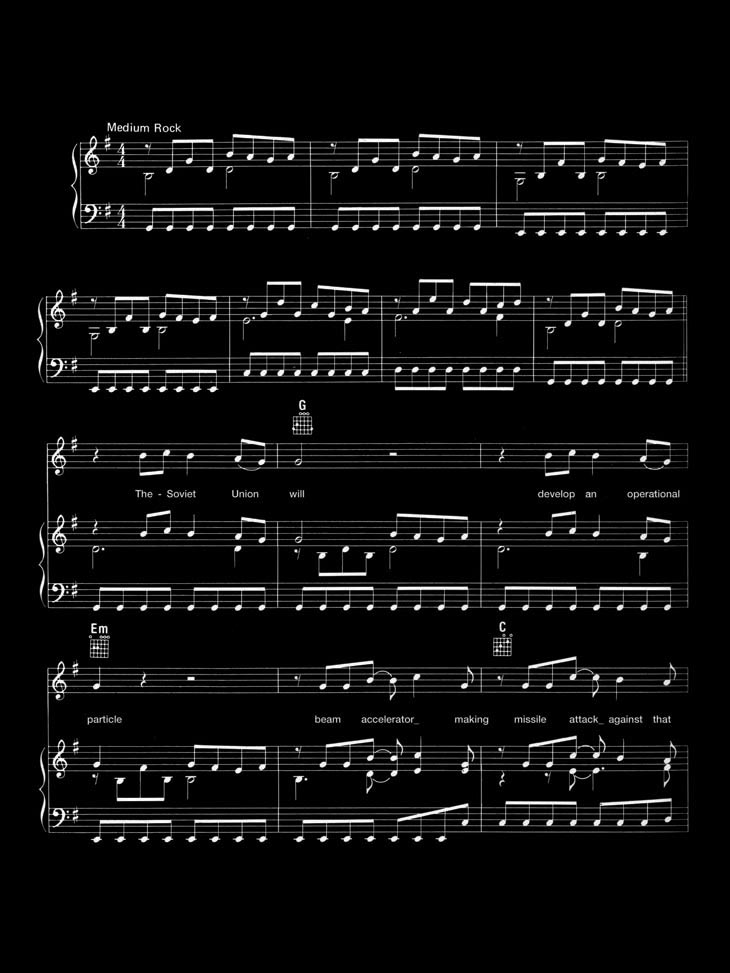
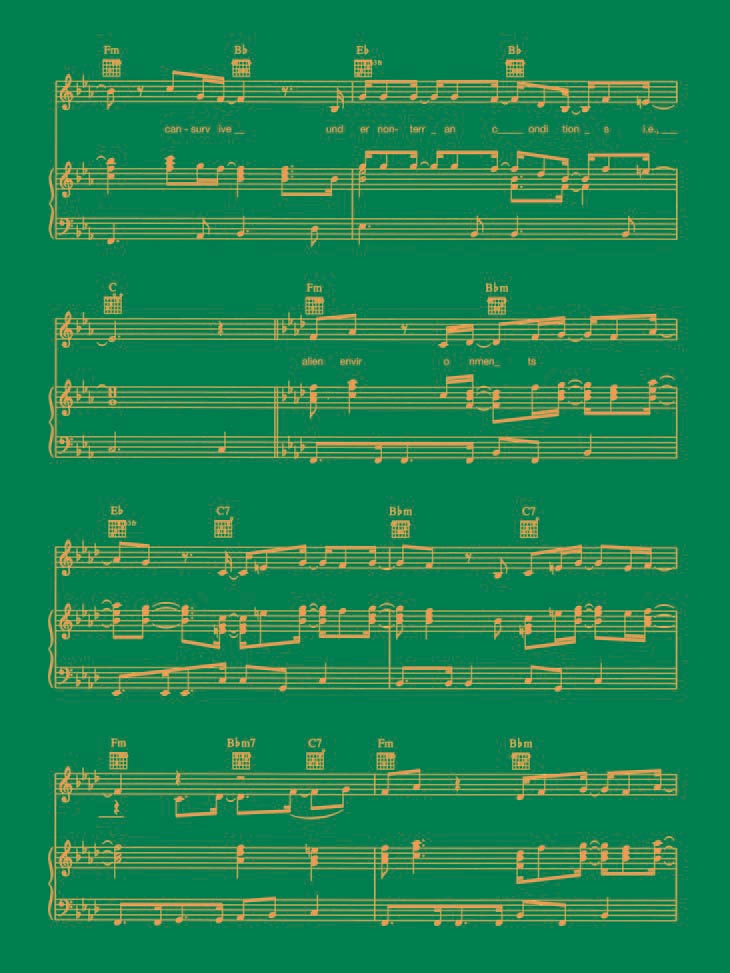
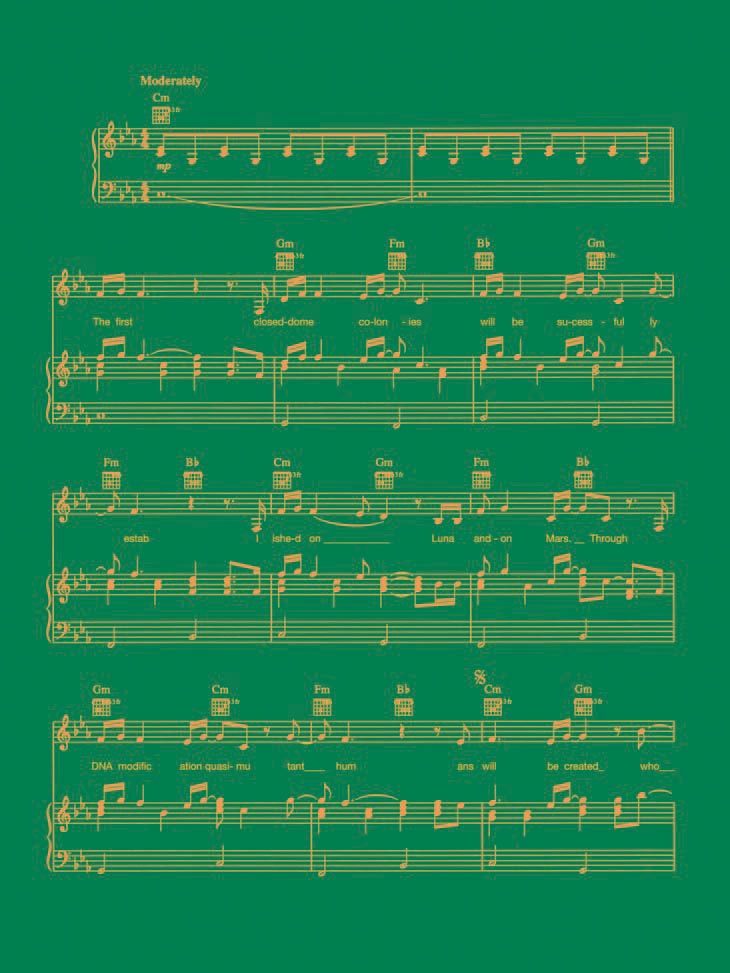
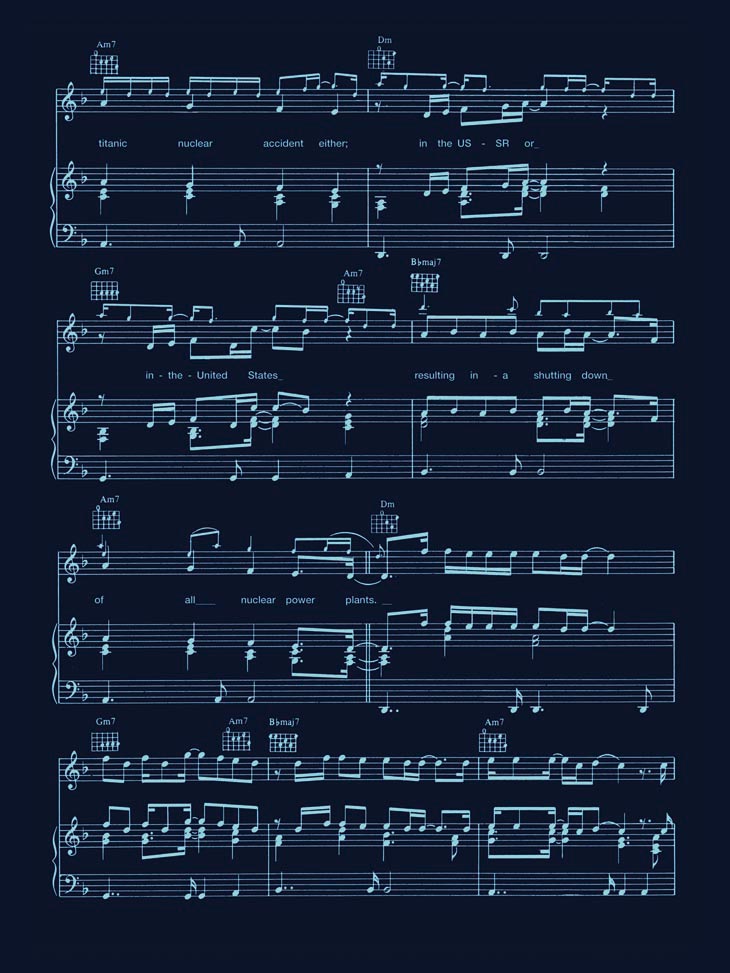
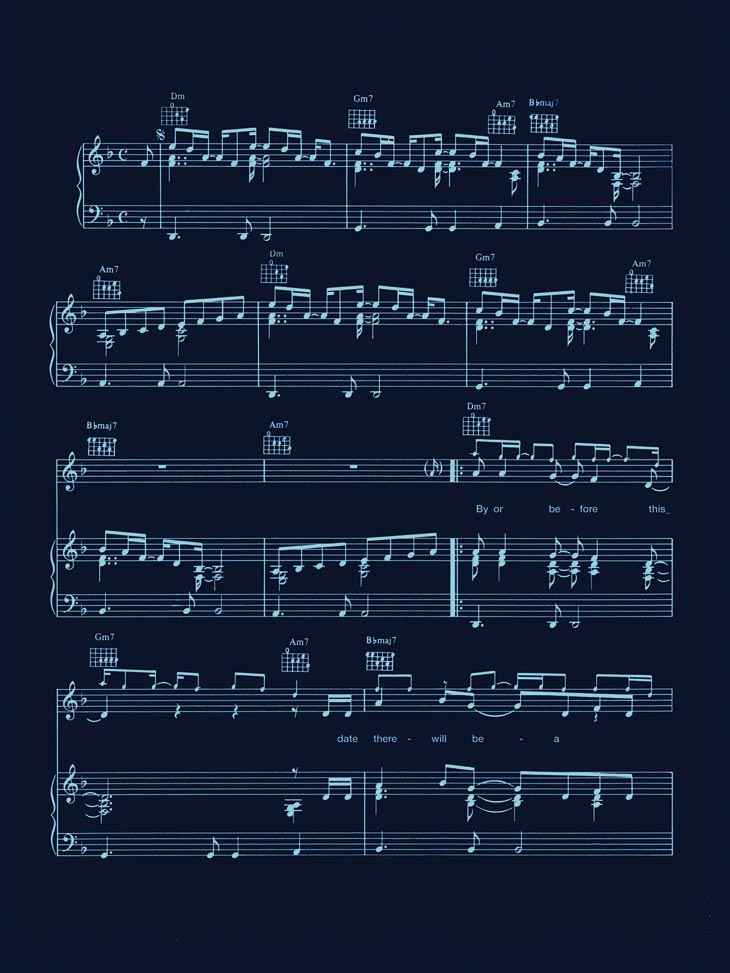
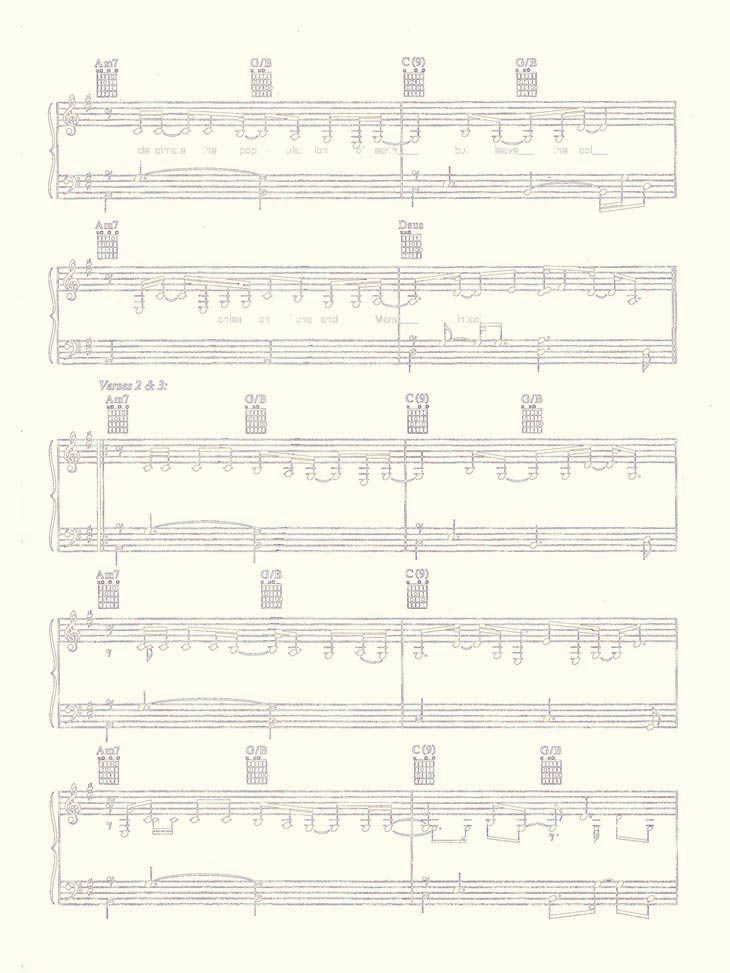


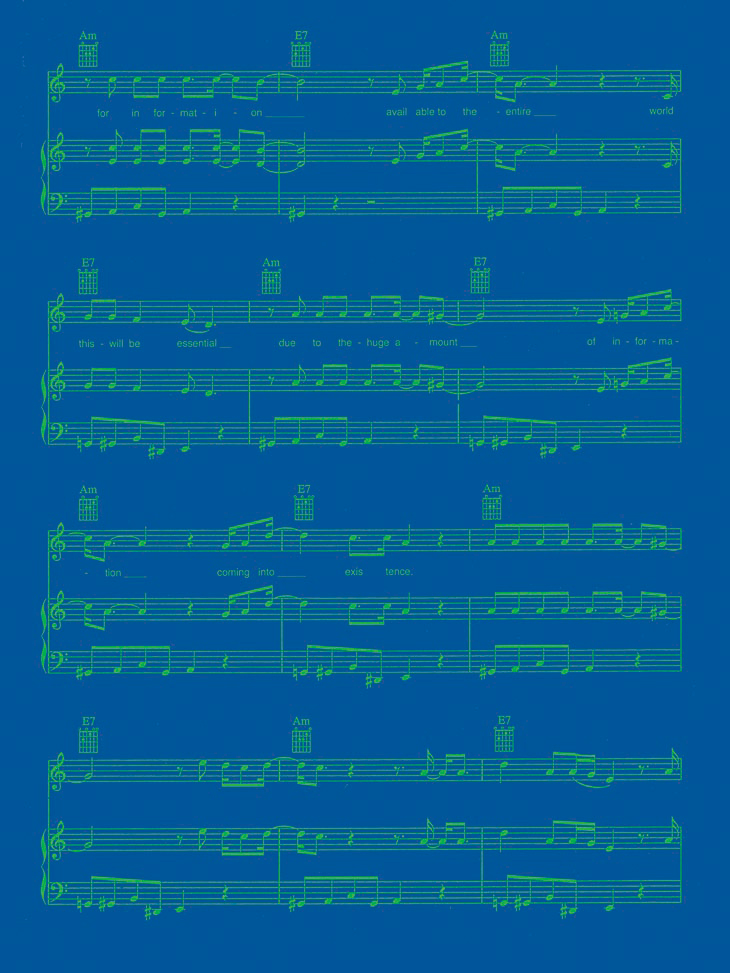

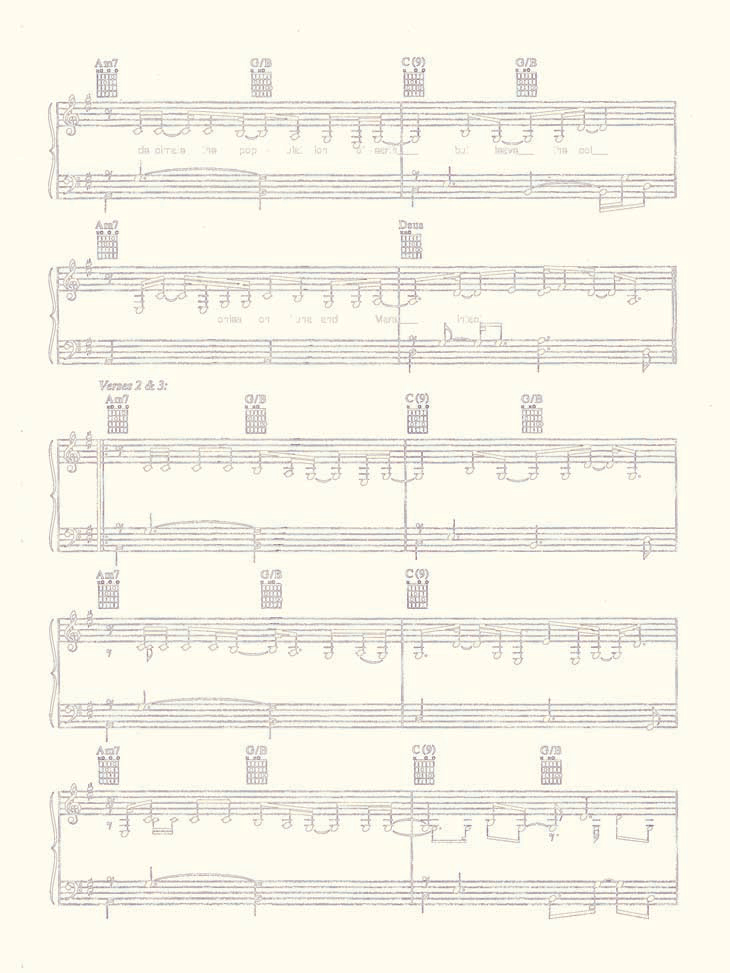
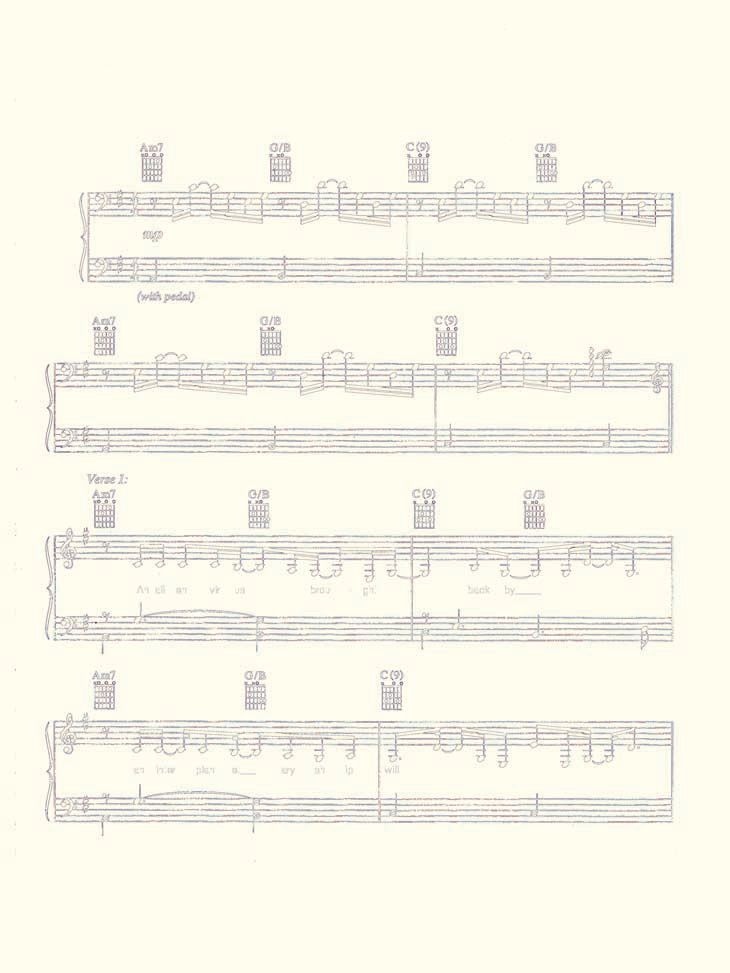
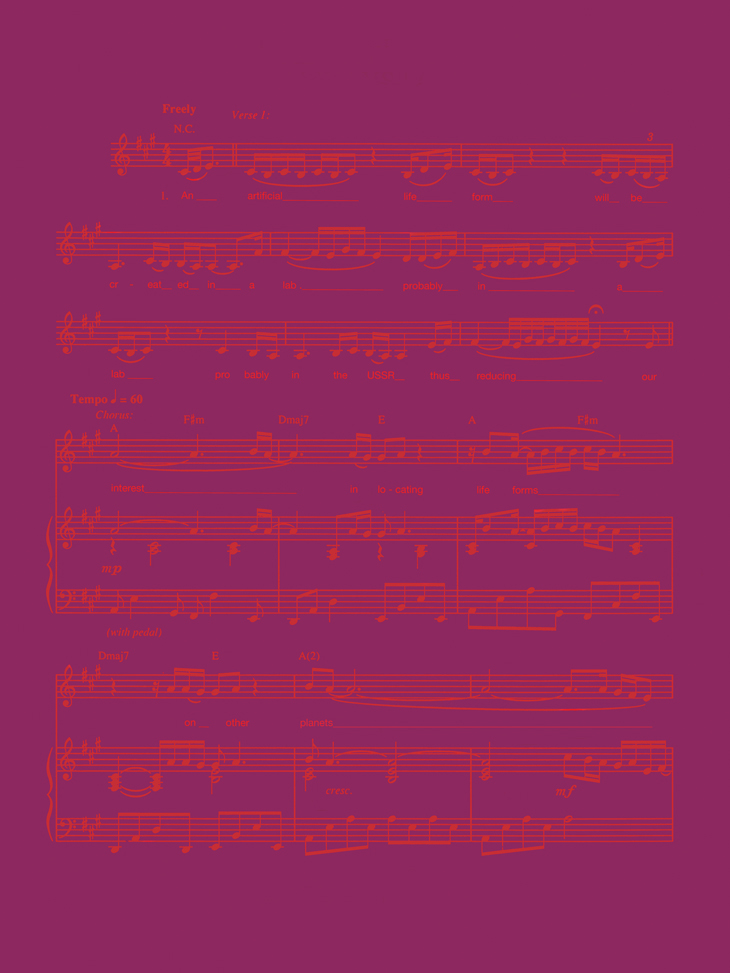
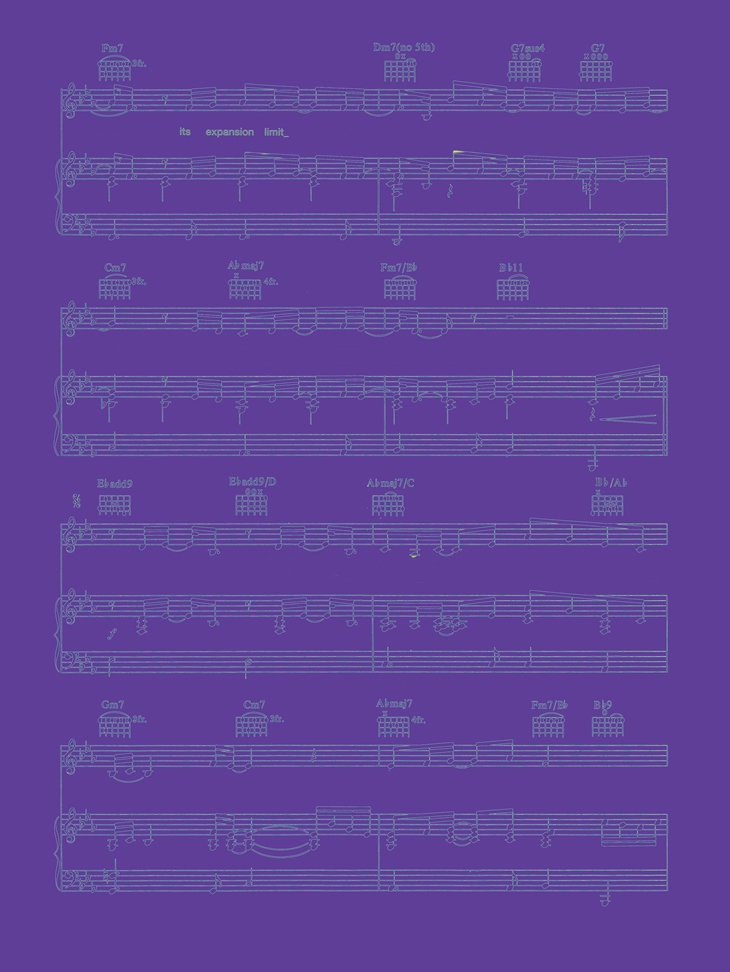

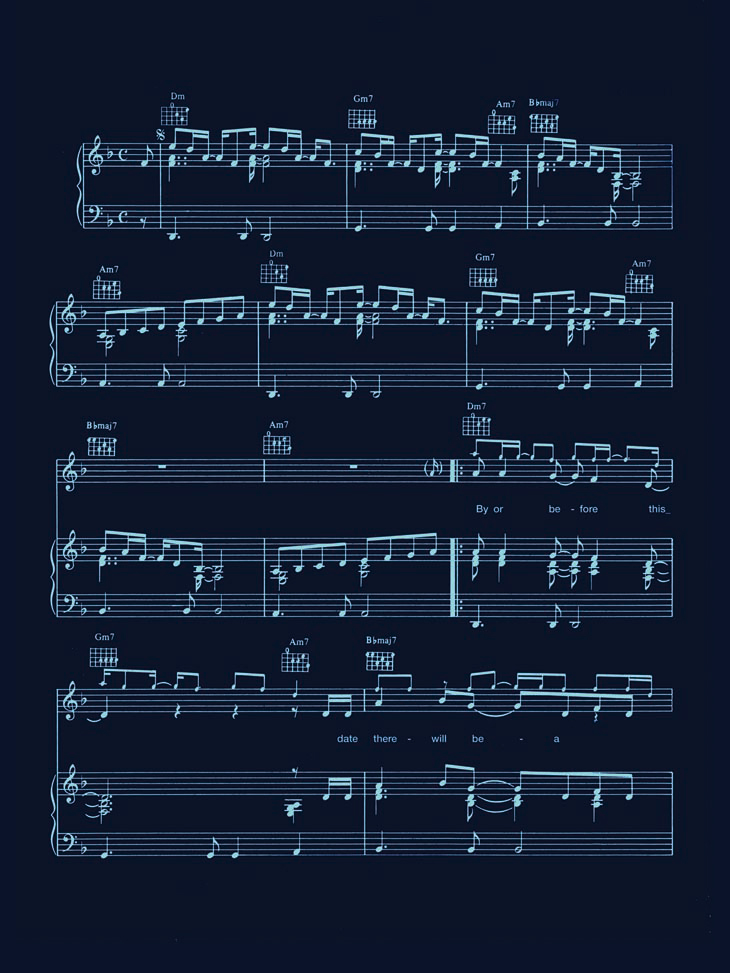
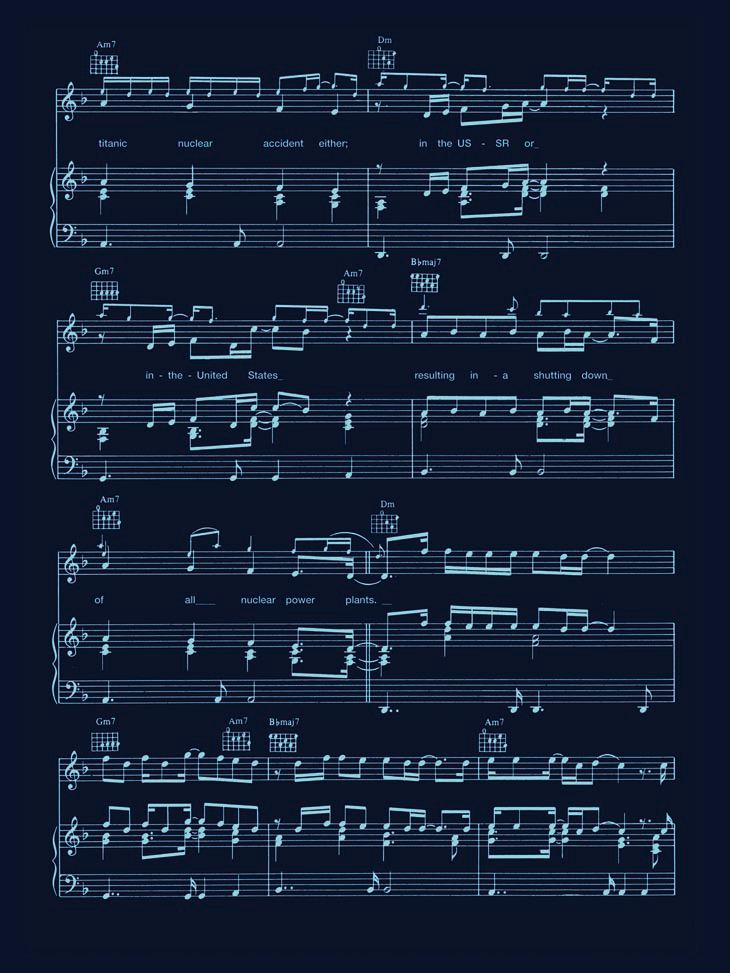

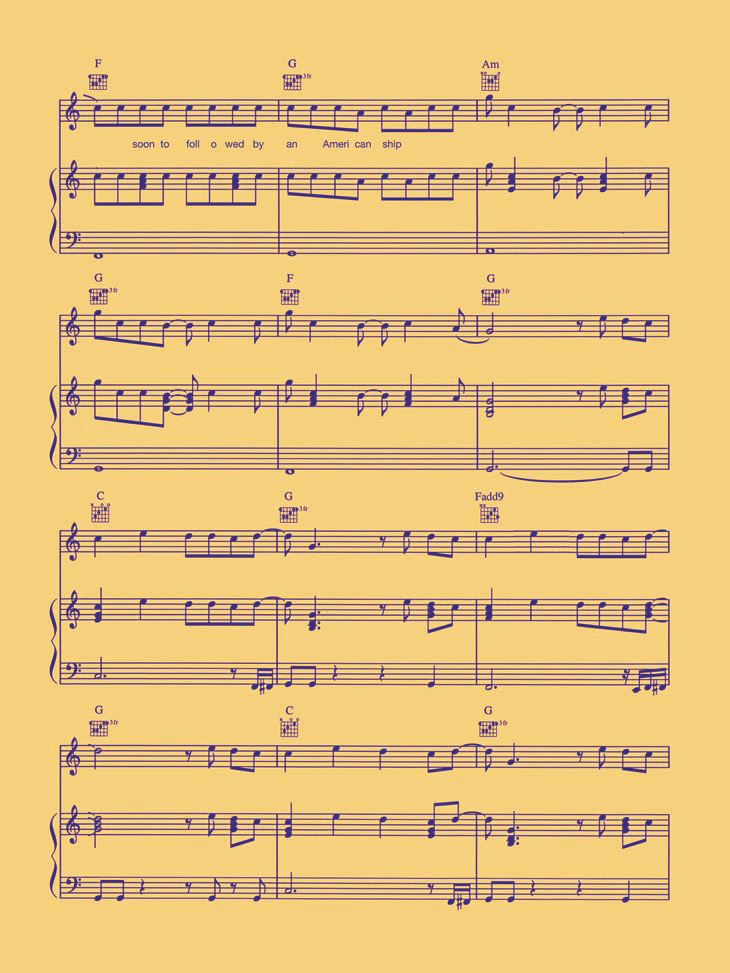
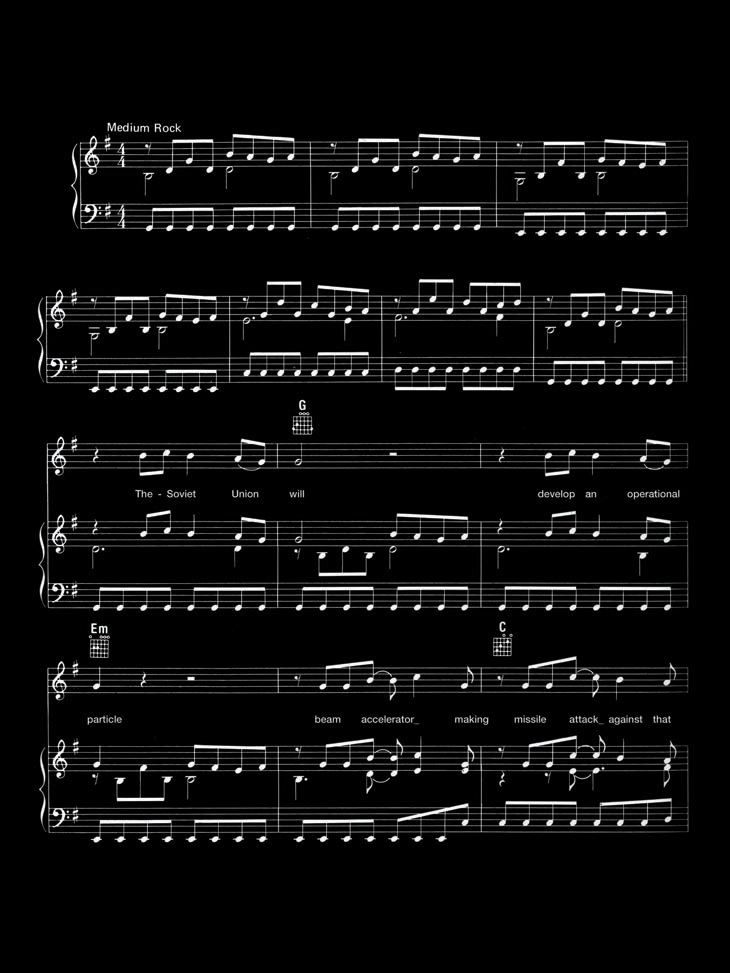
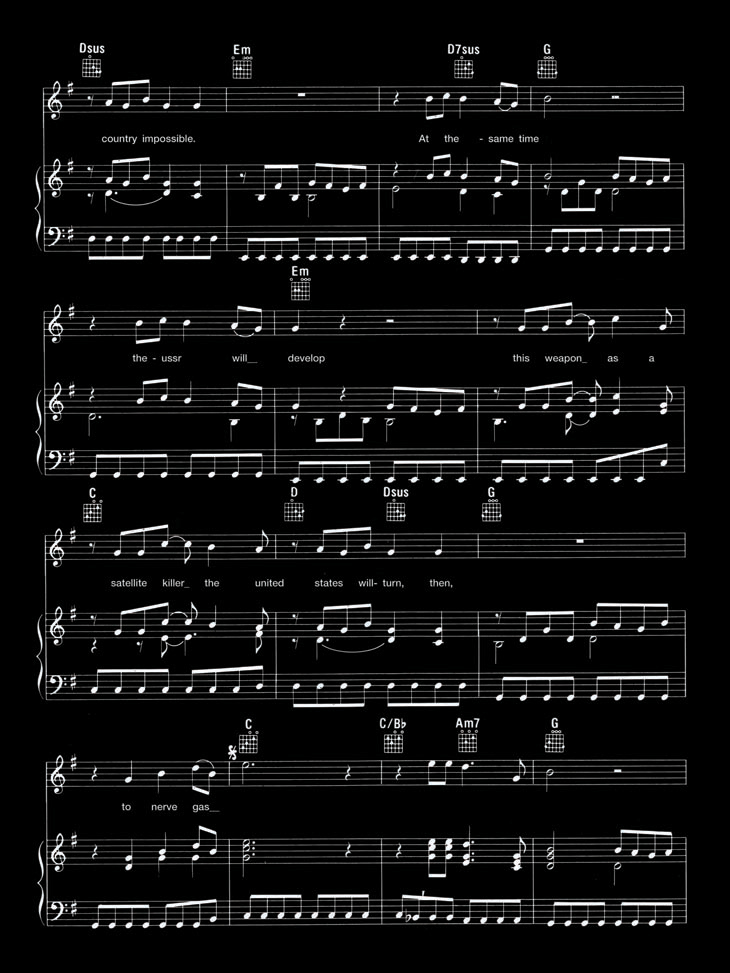
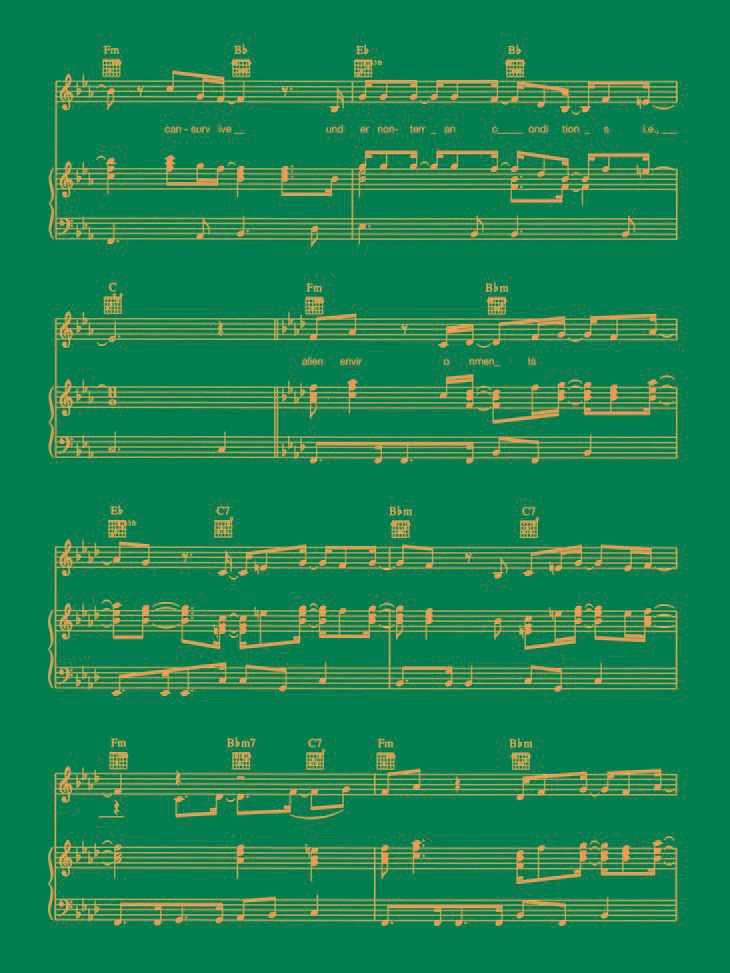
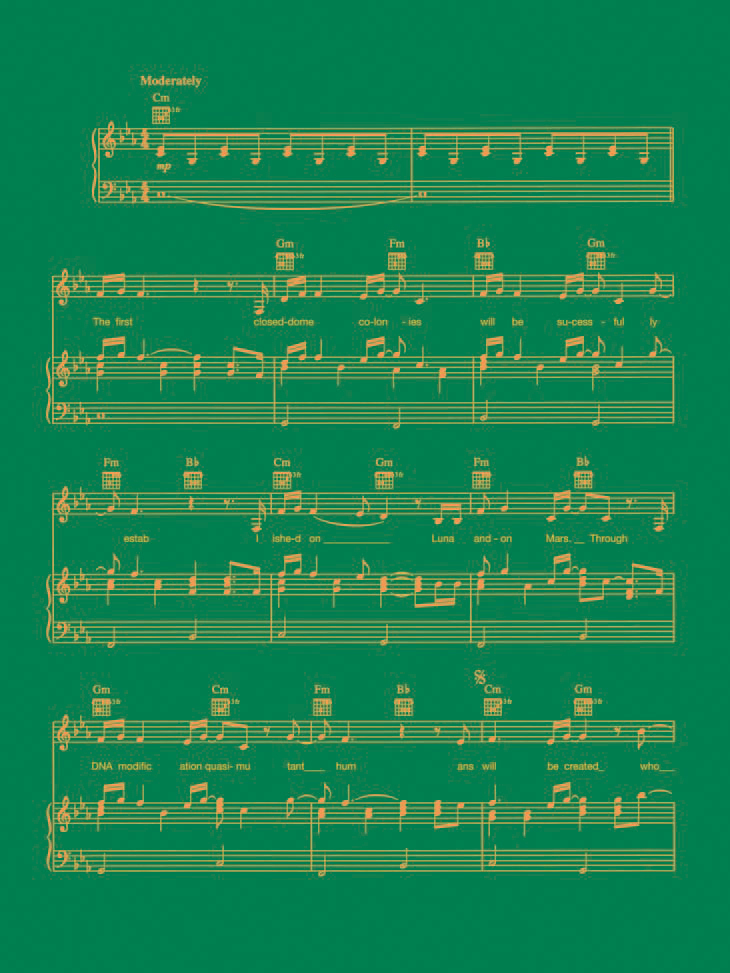
Sean Dack
In Dack’s CCTV #2, an image of architectural structures lit by the aquatic green of night vision footage is interrupted by a series of striated glitches that transform the camera’s indifferent eye into an aesthetic device – an interpreter, not a transcriber. That Dack’s source images employ the unblinking eye of political authority as tokens of an archive of power (missile tests, police helicopters) makes his inversions of fidelity discreetly subversive.
The conversion involved – from a disembodied image on a screen to a laboriously printed object – is part of Dack’s elegant reversal of the photograph’s function, the virtual estranged, made real.
In spite of everything – the existence of Photoshop and montage, the common use of post-production filters, the ease of deletion and tweaking – there is a residual belief that photography still ought to do what it was invented to do: that is, represent, as faithfully as possible, visual reality. Our surprise at a photograph’s ability to deceive seems perpetual. We never learn. Sean Dack’s work operates within that murky territory of photographic unfaithfulness, taking as its source images that really ought to co-operate, like CCTV footage.
Rearranging the integrity of the source image through a custom script, Dack’s images develop unpredictable glitches and impurities that take on an unexpected beauty, much as conventional printmaking makes use of the ‘happy accident’.




